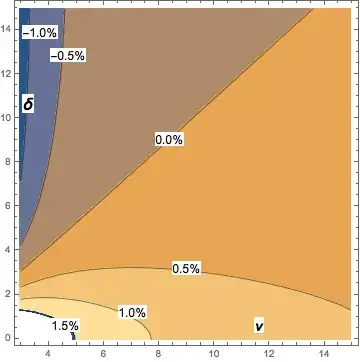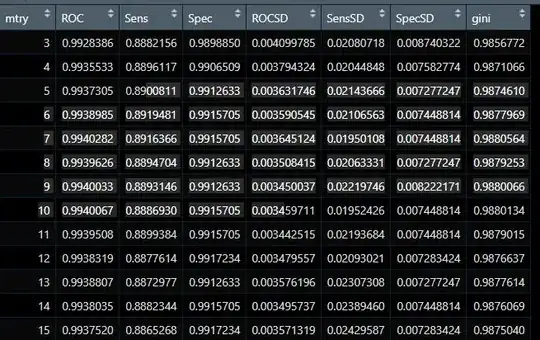I´ve been working in a random forest model for credit scoring in R. I've trained a model using caret::train.
My data "df_samples_rf" has the next structure:

control <- trainControl(method="repeatedcv",
number = 10,
repeats = 5,
search = "grid",
classProbs = T,
savePredictions = T,
summaryFunction = twoClassSummary,
allowParallel = T)
tune_grid <- expand.grid(.mtry = c(3:15))#1
rf_gridsearch <- NULL
rf_gridsearch <- train(bad ~.,
data = df_samples_rf[-27],
method = "rf",
metric = "ROC",
tuneGrid = tune_grid,
trControl = control)
So I assume the model can perform well.
Then I try to predict like this:
rf_predictions <- predict(rf_gridsearch$finalModel,
newdata = df_no_yes)
Data "df_no_yes" has exactly the same structure and class variables as "df_samples_rf", predicted variable also have the same class and levels.
results <- data.frame(real = df_no_yes$bad,
rf_predictions)
I run a confusionMatrix and get:
confusionMatrix(results$rf_predictions, results$real)
Why does caret::train have models with good ROC-AUC and classification metrics, and when predicting over a new set of data, I get so bad results? Am I doing something wrong? Applying the predict in the wrong way?


